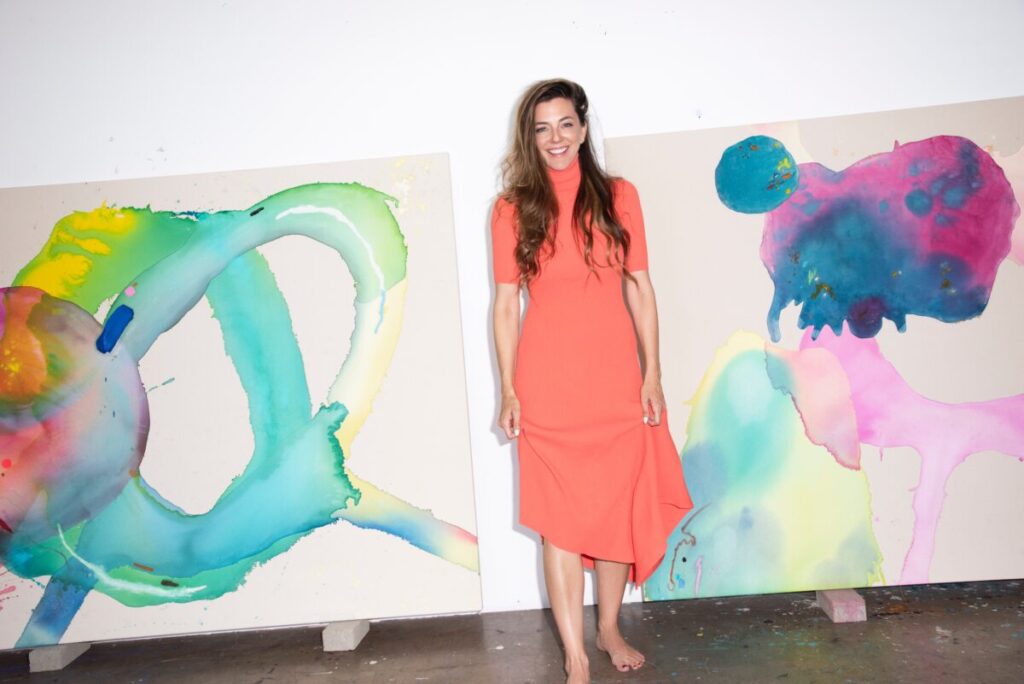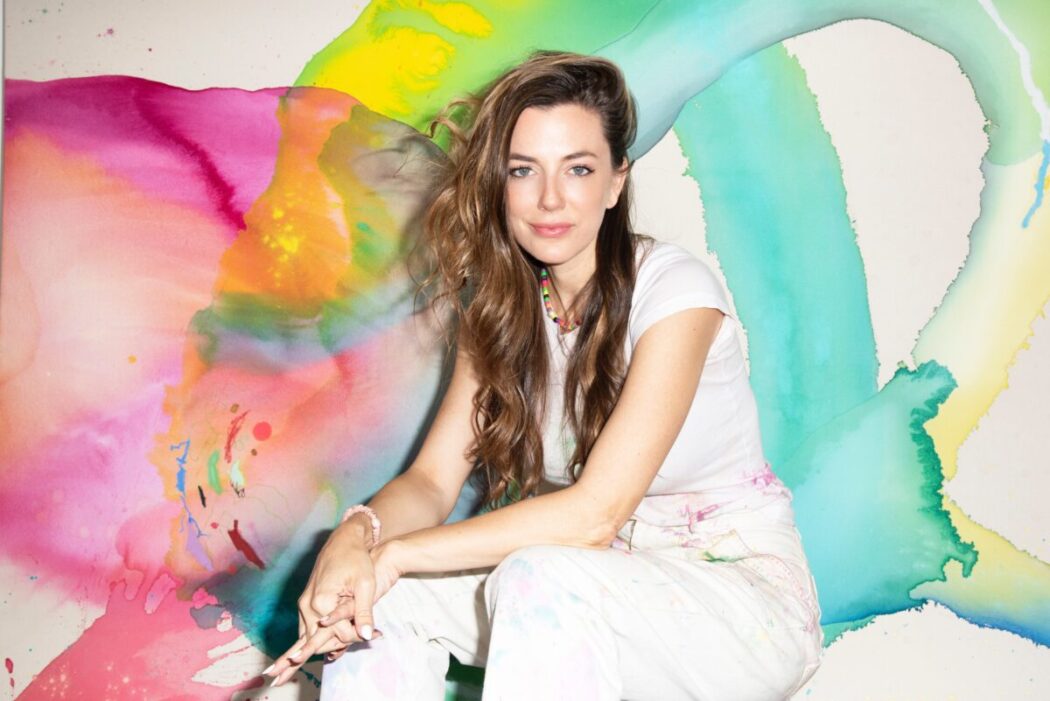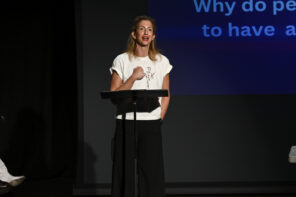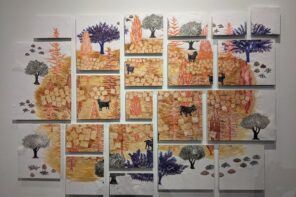The ability to see beyond the scope of limitations is the playfulness behind DeJesus’ art
[dropcap letter=”F”]rom the moment we come into this world, we are surrounded in artistic elements from those born in nature to those that exist in color palettes, textures, and every element of design. Art is the threshold at which an element of the human species is completely stripped down into its most honest and beautiful form—and it becomes the catalyst to our soaring imagination.If we’re lucky, we are aware of art and its influence on us as young children and inevitably, throughout our lives. And the more we expose ourselves to the power and unification of art, we invite a sense of purpose and inspiration that is rarely found in any other outlet.
Artist and model, Kim DeJesus is the kind of artist and creative being that is able to tap into the innocence and unexplored beauty existing in the rawness of art. Her brush strokes emanate a sort of fluid transcendence that allows the viewer to dive into every journey of movement. DeJesus’ use of color and movement is immersive, jovial, and acts as an intersection of boundless youth and eternal curiosity.

What first drew you to art?
My relationship with art-making began at a very young age, and my understanding of art materials developed over time. I am thankful to my teachers who encouraged me, which gave me some confidence and led me to get a scholarship for art school.
Do you recall a time in your youth where color and nature connected and ignited imagination?
My father used to go on geode hunts and would bring home rocks for us to crack open. I was fascinated with the colors that naturally formed inside the rough exteriors of the stones. This is just one example that comes to mind, but I had a colorful and loving childhood full of outdoor adventures that nurtured a foundation for an active imagination.
There is a natural point of connection between color and nature in my work, so it is difficult to think too much about one without the other. Nature significantly shapes the way I move through life, and the natural world certainly influences my interest in color.
You mention the connection between nature and self, and your work certainly emits the fluidity of movement evident of the uncertain beauty of nature. What aspect of nature do you feel most connected to and why?
Thank you. The way I work perhaps lends itself to an ecological exploration of the cyclical nature of the oceans, while I am also thinking about many other things.
It is not easy to choose which part of nature I feel most connected to because it all means a lot to me. I often have the urgency to be near the water, while I am equally drawn to very old trees, birds, rocks and flowers. There is power in all of nature that reminds me how small, yet how deeply connected to Source I am.
In reading your artist statement there is a fragment that really resonates: Frequently, I introduce marks and collage elements whose intentionality disrupts the happenstance of their fluid elements. The completed painting is a record of that process and the corrections and alterations that months of work bring about. Ultimately, I’m looking for artworks that depend on their transcendence in the tension between beauty and flaw, between grand ambition and simple means.
That notion of creating something that takes manifestation over a period of time is much like writing a film. It’s often a reflective process of self and curiosity, healing and abandon. What do you believe allows that tension between beauty and flaws, grand ambition and simple means to coalesce into unison and inevitably, create a finished piece?
I’m glad that resonated with you. A lot of reflecting happens in and out of the studio. Even when I am not painting, I am usually thinking about painting. And even if I am not thinking directly about painting, it all sort of becomes about the work. My mind is always busy with many things I am thinking about, but I think slowly, so it can take a while to figure out how things are moving and unfolding in the studio.
[columns_row width=”half”] [column]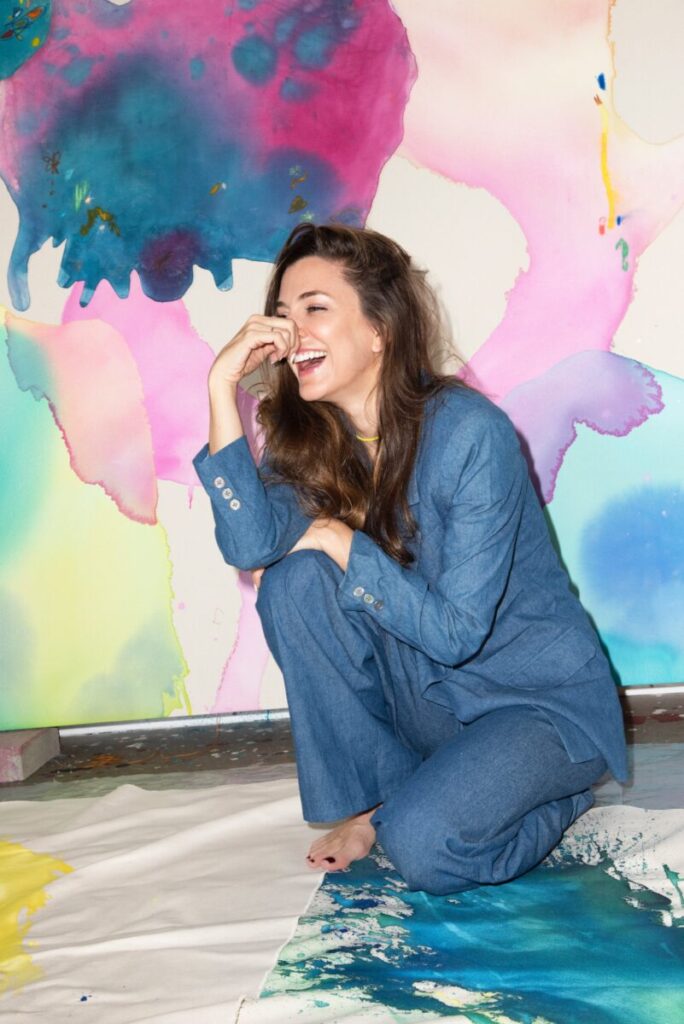 [/column]
[column]
[/column]
[column]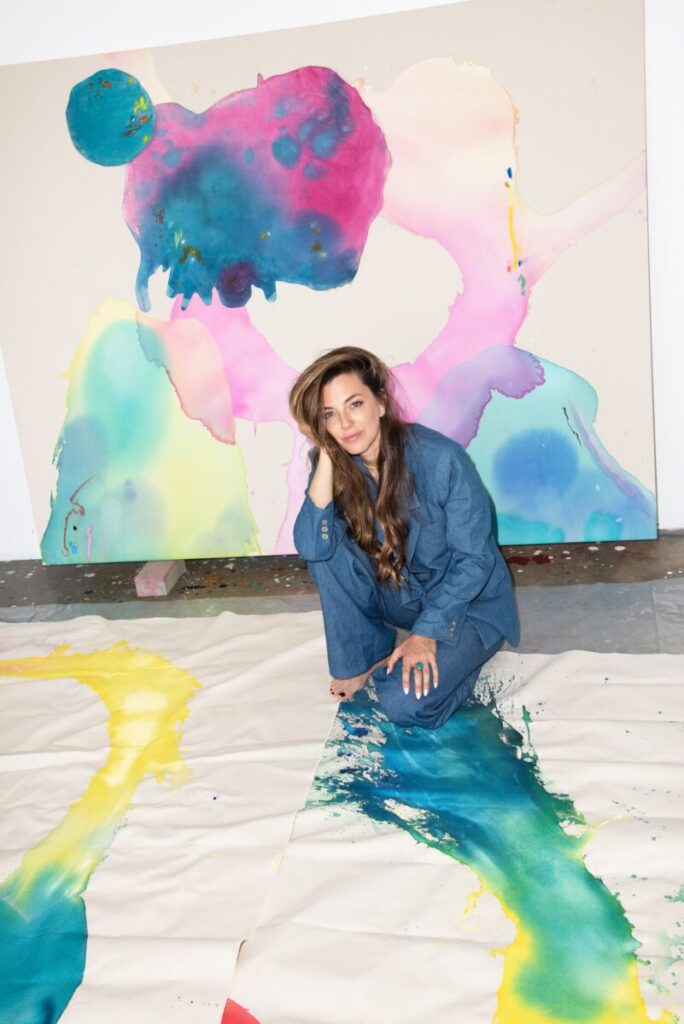 [/column]
[/columns_row]
[/column]
[/columns_row]
About the Work (in her words)
I have always been interested in memory, how it works, and what it reveals about us and the world. In this new body of work, I have been exploring how marks, colors, layers, erasures, and patches, evoke remembrance and forgetfulness and suggest the discoveries we make and the absences in our lives. My work is informed by my concern with natural processes, particularly in the relationship between ourselves and nature, and the tension between being part as well as outside of it. This tension is echoed in the way I work. The material is not entirely controlled in my studio, allowing for accidents, discoveries, and an ongoing conversation between myself, the material, and what’s appearing on the canvas or paper.
Frequently, I introduce marks and collage elements whose intentionality disrupts the happenstance of their fluid elements. The completed painting is a record of that process and the corrections and alterations that months of work bring about. Ultimately, I’m looking for artworks that depend for their transcendence in the tension between beauty and flaw, between grand ambition and simple means.
About the Artist
Kim De Jesús trained at Arizona State University, where she was the recipient of the Katherine K. Herberger Painting Scholarship, and received a post-graduate degree in art from North Central College in Naperville, Illinois. After her studies, Kim took a teaching position. For over a decade, she pursued community-based collaborative art initiatives in the US and abroad. In recent years, her studio practice has led her back to painting.
